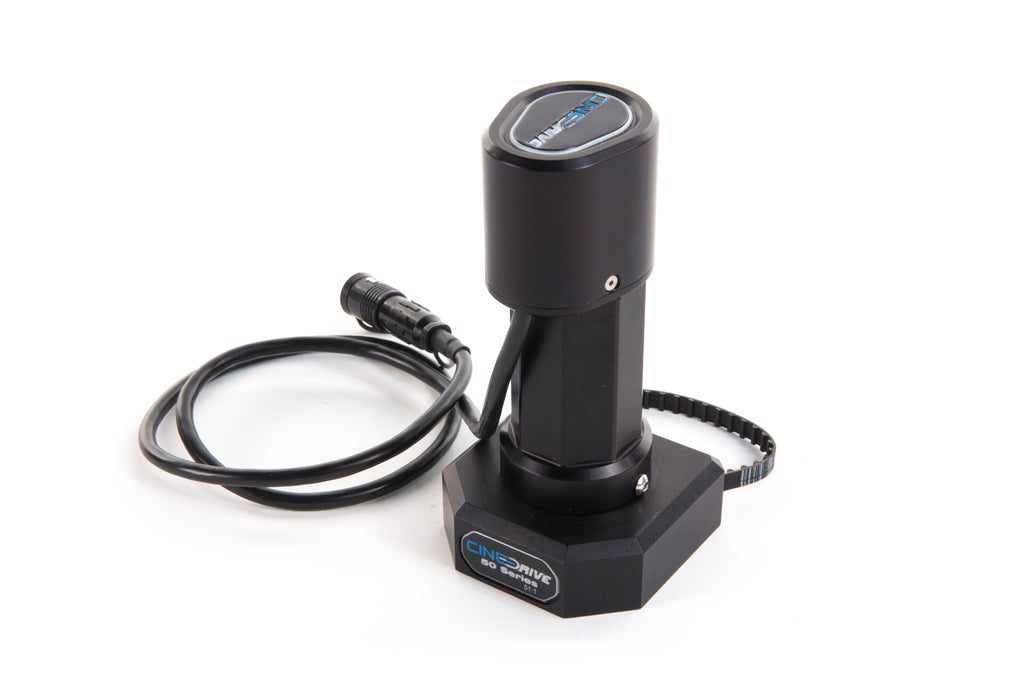No Products in the Cart

Slide movements are an essential part of any filmmakers repertoire and CineDrive® accomplishes them with precision. Although each of CineDrive’s optional slider motors can achieve an array of shots, to allow each user to customize their kit depending on the task at hand, we offer 5 different motors, each with unique gear ratios. Other companies sell devices with fixed motors and claim they can provide the necessary speeds for capturing live action and the torque necessary to easily capture a vertical time lapse shot with a single gear, but the reality is, much like a bicycle has different gears to climb a hill or ride on level surfaces, using the same motor for every application is less than ideal and many times requires expensive add-ons and counterbalance products that make set-up difficult and increase costs.
*Slider motor screws & mounts NOT included.
NOTE: CineDrive Slider Motor MCB Required for operation with CineDrive system.
Download CineDrive Quick Start Guide
We recommend the 100 series motor for most applications. If lifting (vertically) more than 12.5 lbs., we would suggest a stronger motor - however you will lose top end speed. (100 series is 2X faster than the 200 series when at the same speed setting)
This explanation pertains primarily to the use of our slider in a vertical or inclined configuration.
Although the mechanical portion of the motor is the exact same as its analog elektraDRIVE counterpart, the way the motor is controlled is completely different. This means the way it performs will also be completely different. With our analog system, we would simply send pulses of energy to the motor and we would predict the position. This means that if you were performing a slow vertical/incline move where the pulse was far apart and you had a motor with a high enough gear ratio (e.g. 50:1 & 100:1), that could be back driven (reversed/fall) when not under power, the motor would drift back between pulses and throw off the “predicted” position.
Now with the CineDrive® digital system we have a high resolution encoder that monitors exact position of the motor and will use the available power to hold that position. Because of this feature we can now recommend the higher geared motors for slow movements and still have the high speed, all the while, increasing the virtual/incline lift capacity.
The one limiting factor is the one amp limit on the control board. The max limits you see listed by each motor is based off of the highest speed (highest current draw). If you as the user set the speed on the motor to a lesser/slower amount the a motor will be able to lift more. For example, the 50:1 motor will kick the current limit switch when lifting more than 7.5 lbs. at full speed, but if you set the max motor speed to 50% you will be able lift 15 lbs. because at half the speed you will not draw enough power to kick the current limit switch.
*CAUTION
Please keep in mind that if you do choose a motor that can be back driven, if you have a power loss to the system, your camera can possibly back drive (reverse/fall) rapidly and damage could be possible.
| Item | Price | Qty | Total | |
|---|---|---|---|---|
| Subtotal |
$0.00 |
|||
| Shipping | ||||
| Total | ||||

